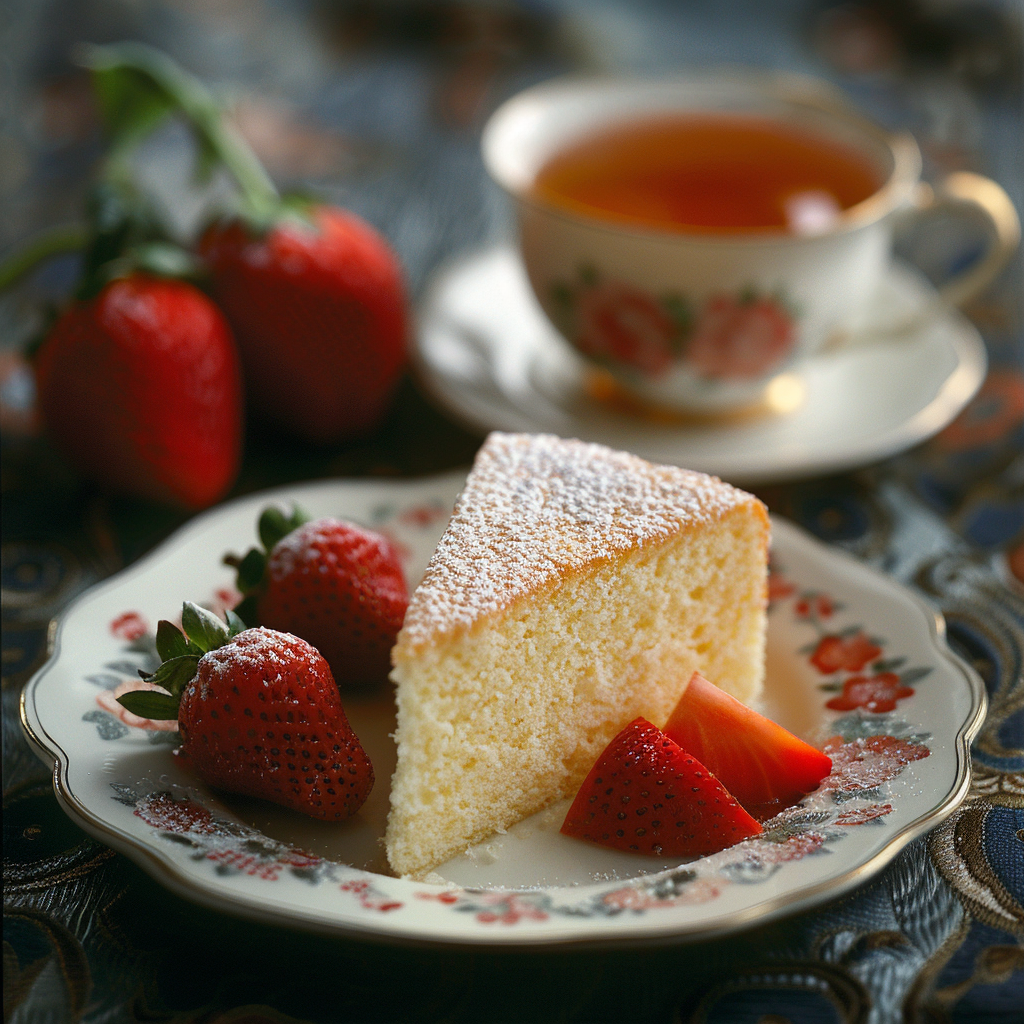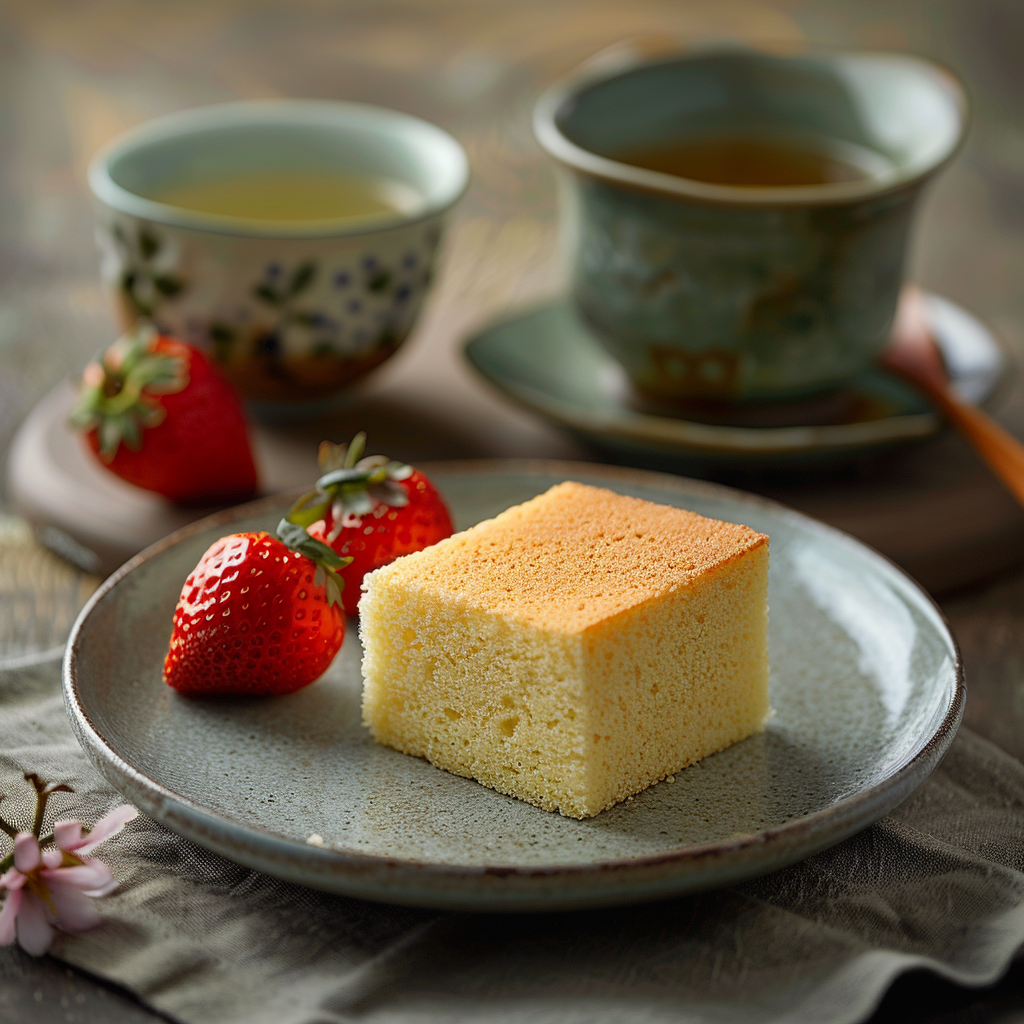Why You’ll Fall in Love with Chinese Sponge Cake
There’s something magical about the soft, cloud-like texture of a Chinese sponge cake. I still remember the first time I tasted one—it was at a dim sum restaurant with my family. The cake practically melted in my mouth, leaving behind a delicate sweetness that made me want to order another plate right away. Since then, I’ve been on a mission to recreate that magic in my own kitchen. After countless trials (and a few flops), I finally nailed it. This recipe is not just delicious—it’s also simple enough for anyone to try, even if you’re new to baking.
A Bite of History: Where It All Began
Chinese sponge cake, or “fa gao” as it’s traditionally called, has deep roots in Chinese culture. It’s often served during festivals and celebrations because its spongy texture symbolizes prosperity and growth. In Guyana, you’ll find a similar version called Chinese cake Guyana, which reflects how this dessert has traveled across borders. Over time, variations like the Japanese steamed sponge cake have emerged, but the heart of the dish remains the same—light, fluffy, and utterly delightful.
I love how versatile this cake is. Whether you’re enjoying it as part of a Chinese sponge cake dim sum spread or wrapped in paper as a portable treat, it always feels special. Fun fact: Did you know some traditional recipes use rice flour instead of wheat flour? That’s what gives certain versions their unique chewiness!
Why You’ll Love This Recipe
This Chinese sponge cake recipe is perfect for anyone who loves baking but doesn’t want to spend hours in the kitchen. It’s light, airy, and not overly sweet, making it a crowd-pleaser. Plus, it’s steamed instead of baked, which keeps it moist and tender. Trust me, once you taste it, you’ll understand why people rave about its fluffiness. And yes, you can even roll it up into a Chinese sponge cake roll if you’re feeling fancy!
Perfect Occasions to Make This Cake
This cake shines at potlucks, tea parties, and family gatherings. It’s also great for holidays like Lunar New Year, where its golden color symbolizes good luck. If you’re looking for something to bring to a brunch, this cake pairs beautifully with coffee or tea. Honestly, though, you don’t need a special occasion to whip up a batch—it’s perfect any day of the week!
Ingredients
- 4 large eggs
- 1 cup granulated sugar
- 1 teaspoon vanilla extract
- 1 cup all-purpose flour
- 1/2 teaspoon baking powder
- A pinch of salt
- Optional: 1 tablespoon milk for extra moisture
Substitution Options
- Use almond extract instead of vanilla for a nutty twist.
- Swap out regular flour for gluten-free flour if needed.
- For a lower-calorie option, try using coconut sugar instead of granulated sugar.
Preparation Section
Step 1: Preheat Your Steamer
Before you start mixing, make sure your steamer is ready to go. Fill the bottom with water and bring it to a simmer. This step is crucial because a hot steamer ensures your cake cooks evenly. Pro tip: Line your steaming container with parchment paper to prevent sticking.
Step 2: Whip the Eggs and Sugar
In a large bowl, beat the eggs and sugar together until they turn pale yellow and frothy. This should take about 5 minutes with an electric mixer. You’ll notice the mixture thickening and becoming glossy—this is key to achieving that signature fluffiness. Imagine the texture of whipped cream; that’s what you’re aiming for here.
Step 3: Add Dry Ingredients
Gently fold in the flour, baking powder, and salt using a spatula. Be careful not to overmix, as this can deflate the batter. The goal is to keep those air bubbles intact so your cake stays light and airy. If you’re adding milk, now’s the time to drizzle it in.
Step 4: Steam the Cake
Pour the batter into your prepared container and smooth the top. Place it in the steamer and cover tightly. Let it steam for 25-30 minutes. As it cooks, you’ll see the cake rise and develop a beautiful golden hue. The aroma will fill your kitchen, making everyone eager to dig in!
Chef’s Tip
To test if the cake is done, insert a toothpick into the center. If it comes out clean, you’re good to go. For an extra fluffy result, let the batter rest for 10 minutes before steaming.
Timing
- Prep Time: 15 minutes
- Cooking Time: 25-30 minutes
- Total Time: 40-45 minutes
Chef’s Secret
The secret to a super-fluffy Chinese sponge cake lies in whipping the eggs properly. Don’t rush this step—it’s worth every second!
Extra Info
Did you know that Cantonese sponge cake often includes red bean paste? Some bakers swirl it into the batter for a fun twist. If you’re feeling adventurous, give it a try!
Necessary Equipment
- Electric mixer
- Steamer pot or bamboo steamer
- Spatula
- Parchment paper
Storage
Store your Chinese sponge cake in an airtight container at room temperature for up to two days. If you live in a humid area, refrigerate it to keep it fresh longer. To reheat, simply steam it for a few minutes to restore its softness.
If you have leftovers, freeze them in slices. Wrap each slice individually in plastic wrap and place them in a freezer-safe bag. They’ll last up to a month. When you’re ready to enjoy, thaw overnight in the fridge and reheat gently.
One more tip: Avoid stacking the cakes directly on top of each other when storing. This prevents squishing and helps maintain their shape.
Tips and Advice
- Use room-temperature eggs for better volume.
- Don’t skip the resting step—it makes a difference!
- Experiment with flavors like matcha or pandan for variety.
Presentation Tips
- Dust the cake with powdered sugar for a classic look.
- Serve it alongside fresh berries for a pop of color.
- Wrap individual slices in parchment paper for a charming touch.
Healthier Alternative Recipes
Looking to lighten things up? Here are six healthier twists:
- Low-Calorie Version: Replace sugar with monk fruit sweetener.
- Gluten-Free Option: Use almond flour instead of all-purpose flour.
- Vegan Delight: Substitute eggs with aquafaba.
- Protein-Packed Cake: Add a scoop of vanilla protein powder.
- Fruit-Infused Treat: Fold in mashed bananas or applesauce.
- Matcha Marvel: Incorporate matcha powder for a green tea flavor.
Common Mistakes to Avoid
Mistake 1: Underwhipping the Eggs
Skipping or rushing the egg-whipping process can lead to a dense cake. Make sure you whip them until they’re light and voluminous. A hand mixer works wonders here.
Mistake 2: Opening the Steamer Too Soon
Resist the urge to peek while the cake is steaming. Sudden temperature changes can cause it to collapse. Patience pays off!
Mistake 3: Overmixing the Batter
Once you add the dry ingredients, mix gently. Overmixing deflates the batter and ruins the texture. Think of folding in ingredients like tucking someone into bed—gentle and slow.
FAQ
What is the Chinese sponge cake called?
It’s commonly known as “fa gao,” which translates to “prosperity cake.” Its name reflects its role in bringing good fortune during celebrations.
What does good Chinese sponge cake taste like?
A good Chinese sponge cake is soft, slightly sweet, and melts in your mouth. It has a delicate crumb and a hint of vanilla or almond flavor.
What is Cantonese sponge cake?
This variation often includes red bean paste or sesame seeds. It’s richer in flavor compared to the classic version.
Why is Chinese cake so fluffy?
The fluffiness comes from whipping the eggs thoroughly and steaming the cake, which locks in moisture.
How many calories are in a Chinese sponge cake?
A typical slice contains around 150-200 calories, depending on the size and ingredients used.
Where can I find Chinese sponge cake near me?
Check local Asian bakeries or dim sum restaurants. Online retailers may also ship fresh cakes directly to your door.
Can I bake this cake instead of steaming it?
Yes, but steaming yields a moister texture. If you bake, adjust the time to 30-35 minutes at 350°F.
Is Japanese steamed sponge cake the same as Chinese sponge cake?
They’re similar but differ slightly in texture and flavor. Japanese versions tend to be lighter and less sweet.
What tools do I need to make this cake?
You’ll need an electric mixer, steamer, spatula, and parchment paper.
Can I freeze leftover cake?
Absolutely! Wrap slices individually and store them in the freezer for up to a month.
Final Thoughts
Baking a Chinese sponge cake is like creating a little piece of happiness in your kitchen. With its rich history, simple preparation, and endless versatility, it’s no wonder this dessert continues to win hearts worldwide. So grab your ingredients, fire up that steamer, and get ready to impress your loved ones with this timeless treat. Happy baking!

Equipment
- Electric mixer
- Steamer pot or bamboo steamer
- Spatula
- Parchment paper
- Large bowl
Ingredients
- 4 large eggs
- 1 cup granulated sugar
- 1 teaspoon vanilla extract
- 1 cup all-purpose flour
- 1/2 teaspoon baking powder
- 1 tablespoon milk for extra moisture (optional)
Instructions
- Preheat your steamer and fill the bottom with water to bring it to a simmer.
- In a large bowl, beat the eggs and sugar together until pale yellow and frothy.
- Gently fold in the flour, baking powder, and salt using a spatula, being careful not to overmix.
- Pour the batter into the prepared container, smooth the top, and steam for 25-30 minutes.



